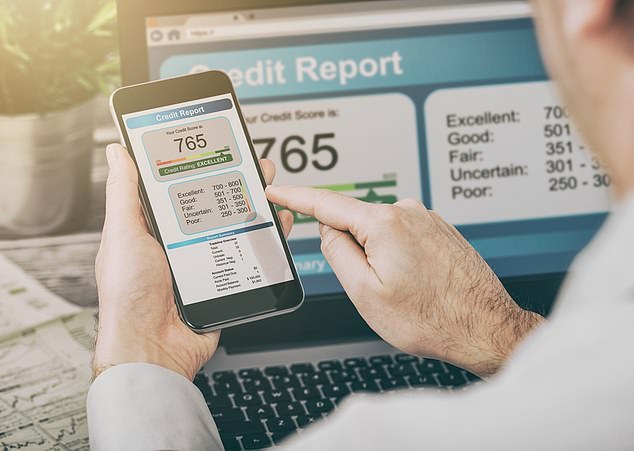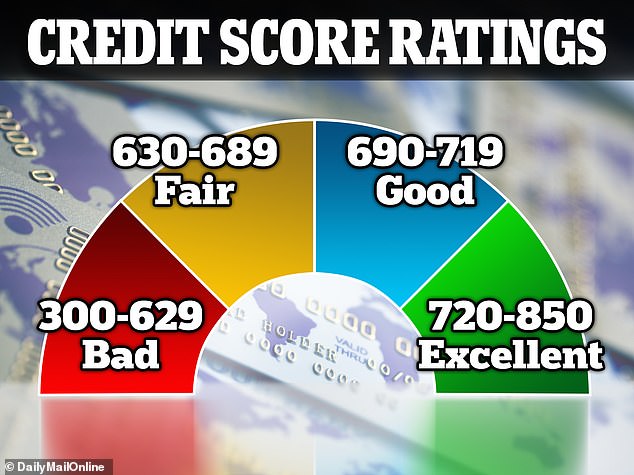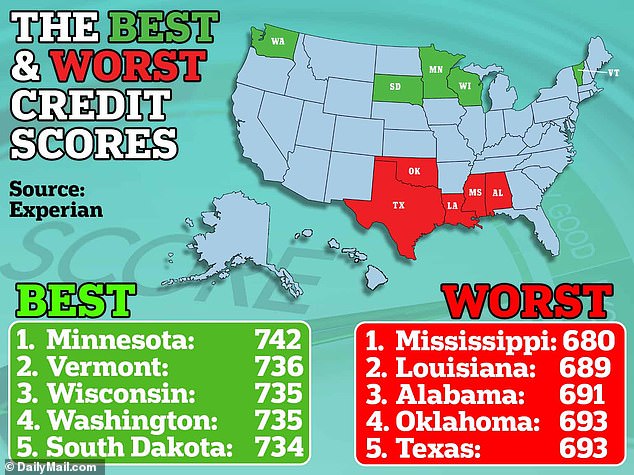I’m a banking expert, here’s the optimum credit score you need – anything above is just bragging

While having a perfect 850 credit score may be impressive, you do not necessarily need it to secure the best deals, claims one expert.
Once you hit 740 you are considered to have an excellent credit score for credit cards, auto loans and other non-mortgage products, according to Ted Rossman, senior industry analyst at Bankrate.
‘For mortgages, I would say the cut-off is 780,’ he told DailyMail.com. ‘After that point, I would definitely continue to practice the good habits that lead to a strong credit score, but I wouldn’t obsess about perfection.’
Your FICO score, which lenders and potential creditors such as landlords use to judge your ability to manage credit, can range between 300 and 850.
According to the credit scoring company, anything below 629 is considered ‘bad’, while anything above 720 is ‘excellent.’

Your FICO score, which lenders and potential creditors such as landlords use to judge your ability to manage credit, can range between 300 and 850

Once you hit 740 you are considered to have an excellent credit score for credit cards, auto loans and other non-mortgage products, according to Ted Rossman, senior industry analyst at Bankrate
‘While 760 used to be the score that could qualify you for the best rates on mortgages, Fannie Mae recently changed the guidelines for federally-backed mortgages to introduce 780 as the top tier,’ Rossman said.
‘It is a bit of a loose guideline, and the number within that mid-700 range may vary by lender. I would generally look at a score of 740 for qualifying for the best terms on most financial products, and 780 for mortgages.’
There is no practical benefit to scoring any higher, he said, rather, you just have bragging rights.
Once you hit the top threshold of 740-plus, Rossman continued, you should be in ‘maintenance mode’.
‘Pay your bills on time, keep your debts low, show that you can successfully manage various types of credit over the long haul,’ he said. ‘In other words, keep doing what you’re doing – but you don’t need to obsess over every last point.’
However he warned that it is crucial not to let your guard down. Credit can change quickly, Rossman continued, and even one 30-day late payment can crush an otherwise excellent score.
‘If you do slip up, it might not cost you five points – it might cost you 100,’ he said.
For example, if you have a 675 credit score and qualify for a $300,000 30-year fixed mortgage with an interest rate of 7.6 percent, you will pay $2,118 per month, according to latest figures from FICO.
If you have a score of 780, however, and qualify for a 30-year deal at 7 percent, you will pay $1,993.
‘Over the course of 30 years, that is a $45,000 difference, which is a good way to illustrate the importance of a good credit score,’ he said.
According to Experian, the average American has a credit score of 714 – while this varies state to state.
When it comes to improving your credit score, you should think about your credit utilization rate, according to Rossman.

According to credit scoring company FICO, anything below 629 is considered ‘bad’, while anything above 720 is ‘excellent’

According to Experian, the average American has a credit score of 714 – but this varies state to state
Credit utilization is credit you’re using divided by credit available to you – and is especially important when it comes to credit cards and other revolving loans.
For example, if you have a $5,000 limit on a credit card and you charge $2,000 on it, your credit utilization rate is 40 percent.
‘Credit utilization is something you can change pretty quickly,’ Rossman said. ‘It’s usually reported on your statement, which a lot of people don’t realize.
‘Even if you pay in full every month and avoid interest, you may have a high utilization ratio if you use the card a lot. Say you go on vacation or do some home improvements and you spend $4,000, you’ve used 80 percent of your credit that month. That looks risky.’
Financial experts typically recommend aiming to keep your credit utilization rate below 30 percent, while FICO says most people with the best credit scores keep it below 10 percent, according to Rossman.
‘My advice would be consider making an extra mid-month payment or two, or maybe ask for a higher credit limit. Those are both ways that you can bring this ratio down.’





